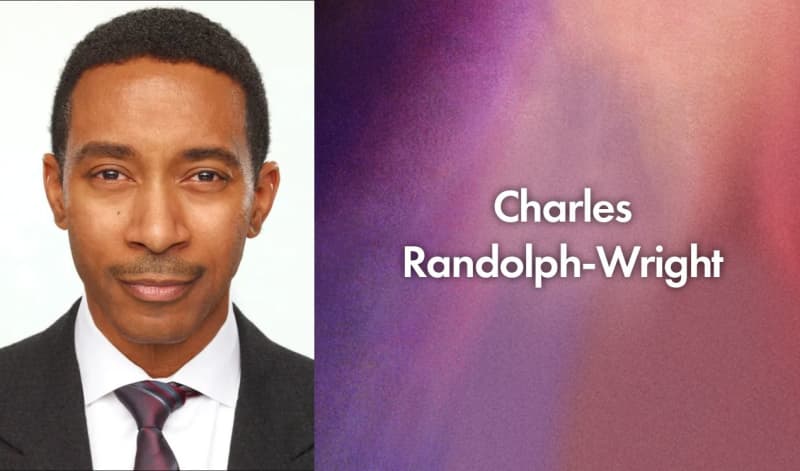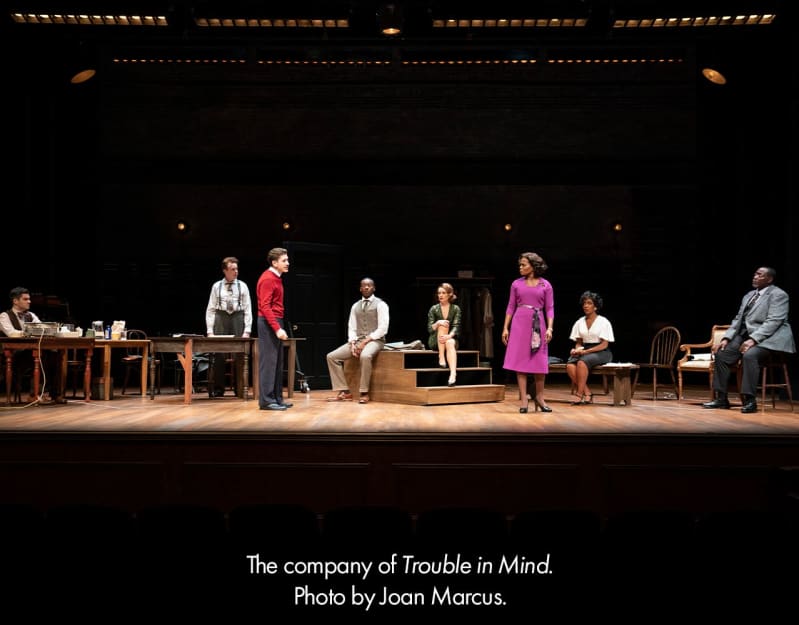Teaching Artist Nafeesa Monroe spoke with director Charles Randolph-Wright about his work on Trouble in Mind.
Randolph-Wright was born in South Carolina, graduated from Duke University, and began his career as a performer. He made his Broadway debut in the original cast of Dreamgirls in 1981. His many directing credits include Motown: The Musical on Broadway and the West End. He is also a playwright, directs and produces for television and film, and serves on Roundabout’s Board of Directors.
NAFEESA MONROE: Can you tell us about your upbringing and the journey to your current career?
CHARLES RANDOLPH-WRIGHT: I grew up in a small town in South Carolina, where cows graze in the city limits. It is highly unlikely for me to have the career that I have, growing up in a southern, rural town. I was blessed with an extraordinary family. I came from a funeral home family, which made us an “elite family.” We were fortunate to have a business that was in our family for generations.
When I started school, my mother said, "You make an A or an F." She said, "There is no middle. There is no average in this family. You make a statement. It's an A or an F." Consequently, I have never been content with gray areas, with being in the middle. I was taught to fight, and I have fought my whole career, because I never have had equity with my white counterparts, ever.
It has been a battle, but at the same time, I've been very fortunate in the work I've been able to do in theatre, in film, in television. I'm so grateful for that, but it has been a journey. I say to people, "I have the TV career right now that I wanted and deserved 25 years ago," but the playing field definitely was not—and is not—equal.
Currently, I feel there is a renaissance for people of color in television, which I'm enjoying. I wish for this to happen in the theatre. Putting up seven shows [by Black playwrights] right after the pandemic doesn't do that, but I am trying to view it as a step. In an interview I was asked, "Charles, are you optimistic about all the shows and the things that are happening?" I said, "No." I said, "This is four decades of work for me that's been impossible, but I kept doing it. I had extraordinary times, but it's been difficult. I'm exhausted, and I'm tired of doing the work—YOU need to do the work.” And then I realized, I am not optimistic, but I've decided I'm going to be anti-pessimistic.
NM: You’ve served on Roundabout’s Board of Directors for many years. How did you come to join the Board?
CRW: My play Blue premiered at Arena [Stage, in Washington, D.C.]. They were talking about taking it to New York, and I'll never forget an agent that I had—who will remain nameless—said, "Where do you want Blue to be?" I said, "At the Roundabout." He laughed. He laughed and said, "That will never happen.” But Todd [Haimes, Roundabout’s Artistic Director/CEO] read my play and said, "I want to do it," and it happened. My family in Blue was one of the first upper-class Black families on a major stage in New York.
Very soon after Blue, I got involved with Roundabout’s Education program. I would go to schools and speak because image is everything. Image gives possibility. I was very aware that students don't see people in my position who look like them. Inevitably, I would have moments when someone young would see me and hear, "He's the director,” or, “He’s the writer," and suddenly, that spark happens and they know they also can do that. "That can be me."
What many white people don't realize is that they always have that. Everyone looks like them. It's a given that you can enter any world, that you can do any and everything. I was very aware of that. I think by the time I was asked to join the board, I thought, "Why?" Then I thought, "If I can help, if there are things I can do because of my presence, I want to do that."
NM: You’ve been working on Trouble in Mind for a long time. Tell us about that.
CRW: Fifteen years ago, I did a reading of the play in the basement of the [Laura] Pels [Theatre], before it became Roundabout Underground. It was just a basement, where [Roundabout Associate Artistic Director] Jill Rafson and I started a play reading series called Different Voices. Ten years ago, we did a reading for a group called Project1VOICE started by Erich McMillan-McCall. They read a play every year at all the Black theatres around the country, and Trouble in Mind was the first one. I got Roundabout to do it at the American Airlines [Theatre]. Four Tony winners were in that reading. It was extraordinary. I then thought, "At least I brought Alice Childress to Broadway for one night."
Backing up further than that, I first read Trouble in Mind in college. I was at Duke University. I was floored with how present and prescient it was then. When we did [the Project1VOICE reading] over ten years ago, friends came up to me, and said, "You rewrote this, right?" I replied, "Not one word." Every single word in this is what she wrote in 1955, and now 66 years later, we still are dealing with what she wrote.
NM: Every step of the way.
CRW: Every step of the way. I have been obsessed with getting this play to Broadway to honor her.
There is hope within the work that's happening. That Roundabout, yes indeed, started this journey to honor Alice before the current reckoning. That's very important to acknowledge, and to realize. I'm also very proud of that, and that I am part of that.
I have been very fortunate in my career, despite its difficult path. I know so many people who are deserving and who have not had that opportunity. If my work in any way has helped to open that door, I am thrilled, because Alice was knocking that door down 60 years ago. To be able to honor her with this play is everything to me. I was walking past 43rd Street a few weeks ago. The side door [to the theatre] was open, and I had to stop. I had that moment of, "Oh my God. We're doing it. We're actually doing it. I did it."
NM: Tell us about the creative team behind Trouble in Mind.
CRW: Nona Hendryx has written incredible music for this. Several times in the script it says, "The blues song," but I wanted music that we created, and Nona is a genius. I was laughing with LaChanze because I said, "I don't want Wiletta to sing like LaChanze," because I don’t feel that Wiletta has to be the greatest singer. We were talking about that, but then LaChanze heard Nona’s music. She immediately responded, "Charles, I'm going to have to sing these songs."
Alice references music throughout the script, and I thought, "This was important to her. I want to create music with yet another icon," and Nona Hendryx is that icon, who transcended every barrier, but still never got her due. I mean, she's acknowledged, obviously, but never received equity with HER counterparts.
I am proud that the Roundabout realizes what an honor it is that Kathy [A. Perkins, lighting designer and theatre historian] is doing this. She has been in this business for decades, taught at major universities, designed lighting all over the world, and never got a shot on Broadway. Before this season there were only two Black lighting designers in Broadway history. TWO! That is beyond depressing, but to be able to give Kathy this opportunity is exhilarating. As a designer and historian, Kathy actually worked with Alice, so she has an insight none of us have.
NM: What do you see for the theatre, the arts, and BIPOC community in the near future?
CRW: There was an interview I did recently, because in the three zillion projects I'm trying to do, there's a Harlem Renaissance project. I didn't truly realize until this past year that the Harlem Renaissance came after the influenza of 1918. It came after a pandemic.
What is our renaissance after this pandemic? How do we come out of these ashes? How do we shift? We have a health pandemic and a race pandemic. What do we do now? The Roaring '20s came out of the influenza. How are we going to roar out of this?
NM: What would you say to aspiring artists? What advice do you have for our students?
CRW: Never give up. Things may not happen in the way you expect or the way that you want or in the time frame that you want. You must have faith. You have to find your chosen family, who take care of you, and you take care of them, because you can't do it alone. Your journey is your journey, but it becomes a little easier when you take that journey with others who enable you to function, who help you get into “good trouble.”
We all have a unique story to tell, and the more specific you are, the more universal it will be. I want people to tell their stories. I've been fortunate that I've been able to tell some of mine.
I think that to follow the dream and realize the dream, it's not a straight road. The road winds and changes and turns, but it doesn't mean that you get off that road. And if you go down a path that doesn’t work, you can always turn around. You always can change that path. Find the people that give you permission to be you, then be who you are and celebrate that.


